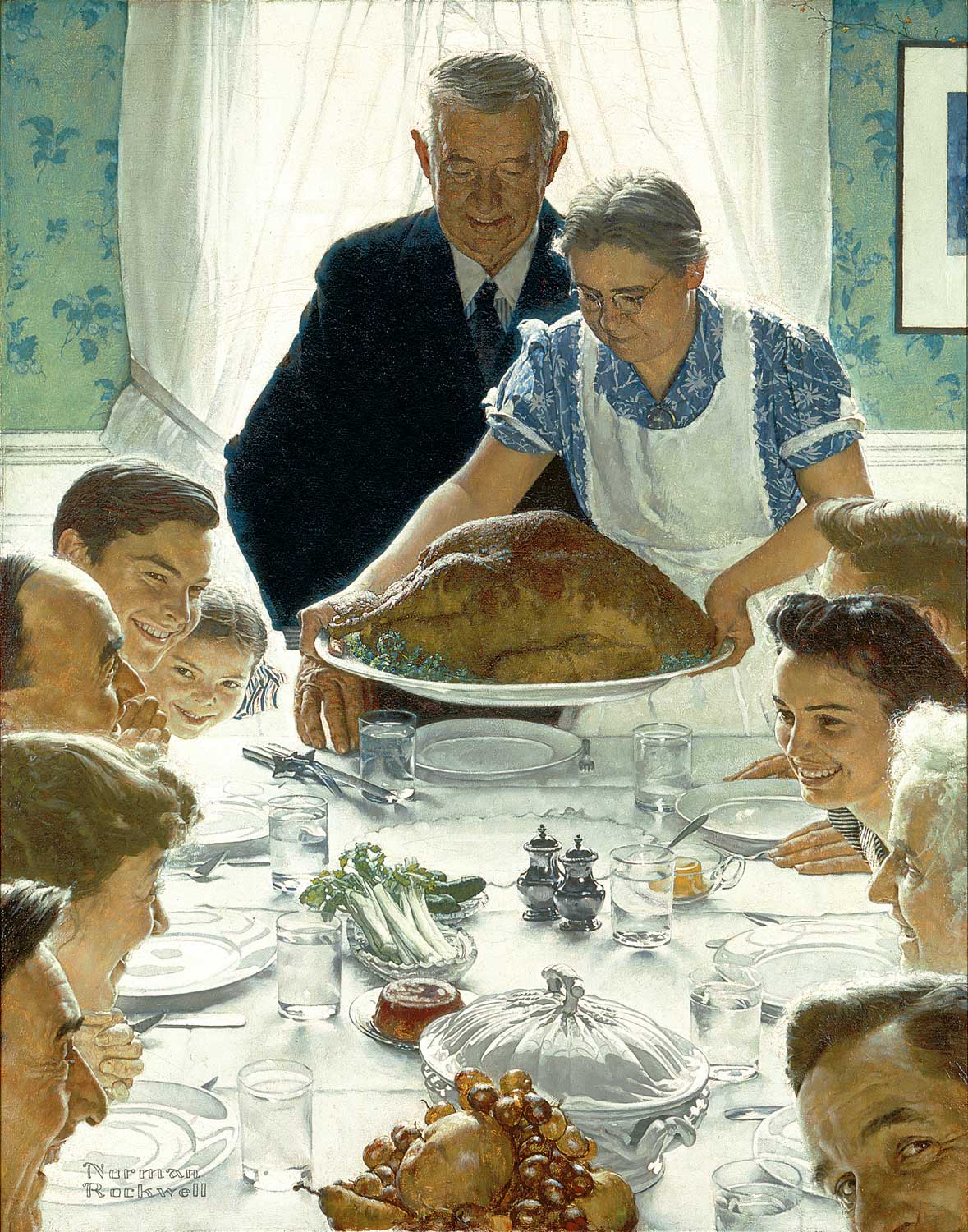Any famous painting is a combination of both artistic talent and deep connotations invoked in it. Therefore, looking at an artwork merely as a picture without going deeply into the origins and subtle meanings of various scenes, and characters leaves many details unrevealed. A perfect example of a painting requiring a profound review and examination of its social and historical context is Freedom from Want by Norman Rockwell, first published on March 3, 1943. It is one of the four artworks demonstrating the critical values, which were intended to raise the citizens’ patriotism during the hardships of World War II. Thanks to its remarkable implementation and various inherent meanings, Freedom from Want is regarded as a true masterpiece of the American art of all times.
As most of Norman Rockwell’s paintings, the one being reviewed belongs to the realism artistic movement, which was relatively popular in America during those days. In Freedom from Want, the viewer can see a traditional American family gathered for a meal, probably for the Thanksgiving celebration. The particularity of Rockwell’s interpretation of realism is its relatively exaggerated and idealistic character with the depiction of “themes devoid of conflict or struggle” (Lynch, 2020, p. 4). Everyone is smiling and willingly sharing their life stories with each other. The detailed images of the characters’ faces, food, dishes, and silverware add to the artwork’s realistic impression. This conveys the author’s desire to paint an ordinary happy family which would bring the desired mood of tenderness and slight nostalgia to the audience.
Looking at Freedom from Want, it is necessary to take into account the significant historical influences reflected in the painting. This piece of art was created in 1943 when World War II was raging throughout the world, claiming thousands of innocent lives. The idealistic image of a family gathering was supposed to serve as a symbol of the future to come when all the hardships would be over. Besides, the idea of shortages common for the wartime is also reflected in some details. Although the general surroundings resemble a celebration, the table is notably empty with water as the only drink. As Lynch (2020) mentions, that reminds of a feast yet to come, since the demonstration of an abundant table would obscure the “realities of food rations and other shared sacrifices” (p. 69). Thus, historical events shape many of the details that can be seen in the painting.
Besides the aspects mentioned, the political factors also had a substantial influence on the reviewed artwork. The history of its creation was directly connected to the political goals of the country’s leadership. The starting period of American involvement in World War II was characterized by “the lack of open, direct talk about what the war was for” (Seal, 2016, p. 145). Countering that trend, Franklin D. Roosevelt made his famous speech on American society’s four traditional freedoms. The address was then supplemented by order of the relevant four paintings, one of which was Freedom from Want. It intended to demonstrate the nation’s true values and its desire to ensure a peaceful and prosperous life for everybody. Therefore, these political goals initially defined the idea to be conveyed by the painting and the composition to be used in it.
As the discussion above shows, understanding various historical, political, and social events occurring at the given time substantially assists in interpreting the painting. Thorough research in these areas helps understand the meanings of different details used by the artist and pay attention to those aspects, which would otherwise be neglected. Therefore, going deeply into the context surrounding the creation of Freedom from Want allows appreciating this masterpiece of American art.
References
Lynch, S. (2020). Morality and aspiration: Some conditions of Norman Rockwell’s four freedoms [Unpublished doctoral dissertation]. Bowling Green State University.
Rockwell, N. (1943). Freedom from want [painting]. Norman Rockwell Museum, Indianapolis, IN, United States. Web.
Seal, A. (2016). Freedom from abstraction. Dissent, 63(4), 145–149. Web.
Appendix A
Freedom from Want
